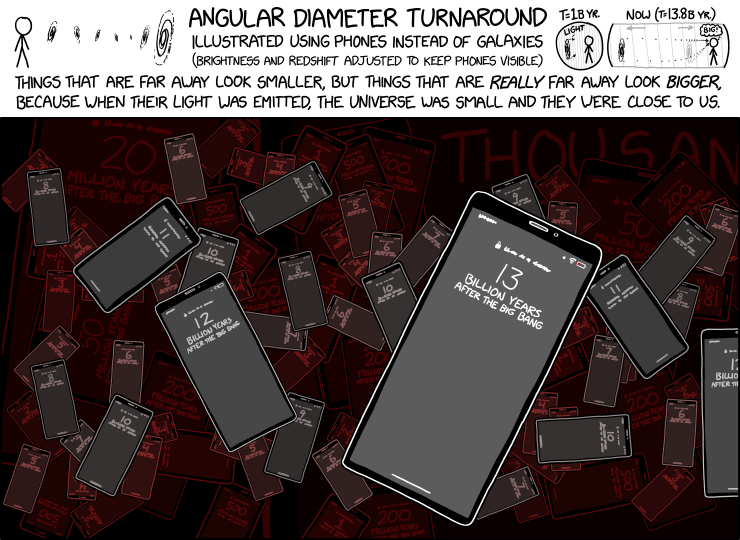May 20, 2022
#2622: Angular Diameter Turnaround explain

[Cueball and a row of 7 spiral galaxies, the first 5 growing sequentially smaller and the last 2 growing larger]
Angular Diameter Turnaround
[A spiral galaxy emitting light and Cueball in a small circle with closely spaced grid lines, captioned “T=1b yr.”]
[A stretched truncated circle with widely spaced gridlines, with the galaxy at one side and Cueball on the other, and light following a curved path through the stretched space to Cueball, captioned “Now (T=13.8b yr.)”. Cueball is thinking “Big!”]
Illustrated using phones instead of galaxies
(Brightness and redshift adjusted to keep phones visible)
Things that are far away look smaller, but things that are really far away look bigger, because when their light was emitted, the universe was small and they were close to us.
[numerous mobile phones scattered in space, with numbers visible on their lockscreen. The closest is brightly lit and says “13 billion years after the Big Bang” on the screen. Subsequent phones behind this one are smaller, fainter and more red, until they reach “3” (the rest of the text is too small to read). From this point, the phones grow larger, although they continue to get fainter and redder. Subsequent phones show “2”, “1”, “500 million”, “200 million”, “50 million”, “20 million” (which is larger than the original “13 billion years after the Big Bang” phone) and a very large, faint phone so big that only the word “thousand” is visible, with the rest of the screen obscured behind other phones or so large it extends off the panel]